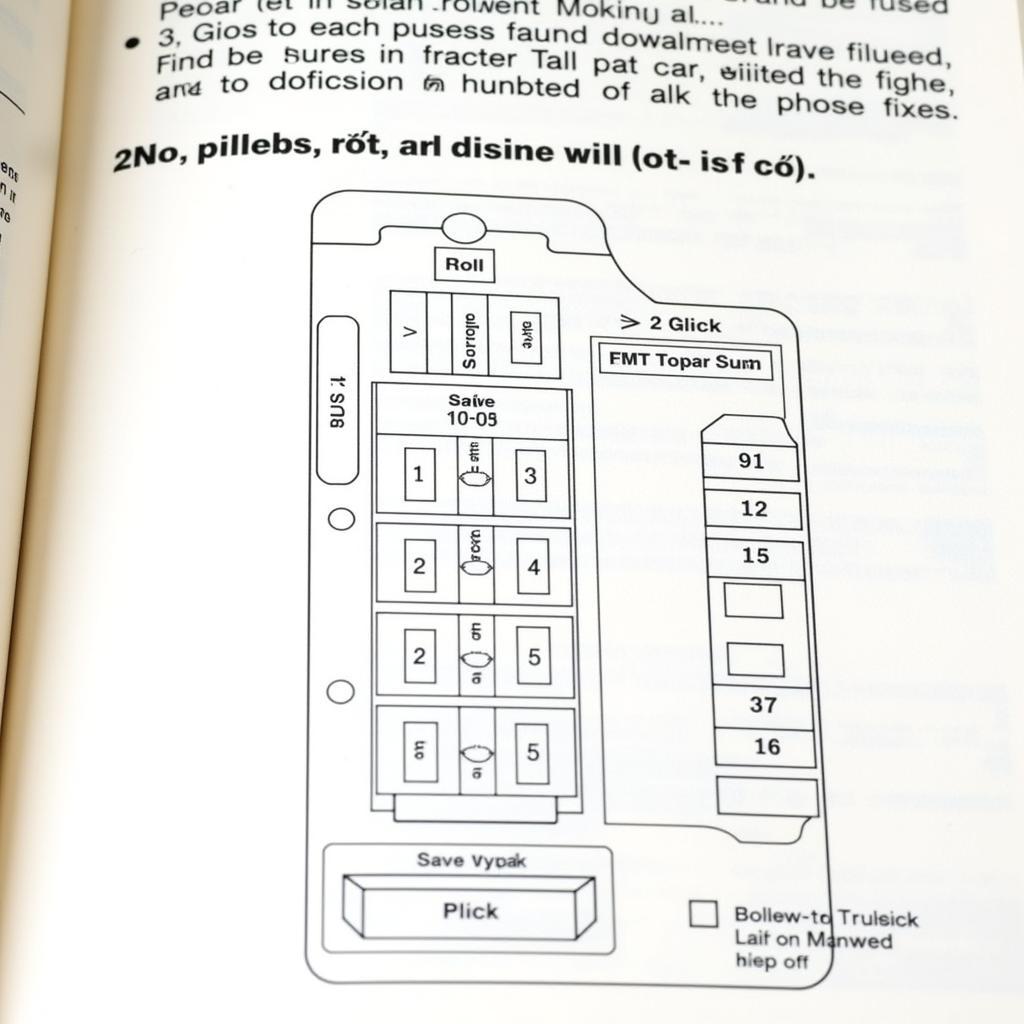Knowing how to fix a car fuse is a fundamental skill for any car owner. A blown fuse can be a minor annoyance, leaving your radio silent or your interior lights dim. But it can also signal a more serious electrical problem. This guide will walk you through everything you need to know about diagnosing and replacing a blown car fuse, empowering you to tackle this common car issue with confidence.
Understanding Your Car’s Fuse Box
Your car’s electrical system is protected by a network of fuses, typically housed in one or two fuse boxes. These boxes are usually located under the dashboard, in the glove compartment, or under the hood. how to fix car fuse box explains in detail how to locate and access these boxes in various car models. Inside, you’ll find an assortment of fuses, each responsible for a specific circuit.
Locating the Correct Fuse
Identifying the faulty fuse is the first step. Your car’s owner’s manual will have a diagram showing which fuse corresponds to which component. For example, if your radio isn’t working, the diagram will tell you which fuse to check. This diagram is crucial for successful troubleshooting.
 Car Fuse Box Diagram
Car Fuse Box Diagram
How Do I Know if a Fuse is Blown?
A blown fuse is usually easy to spot. Look for a broken filament inside the fuse. Sometimes, the metal connector may be discolored or even melted. If you’re unsure, using a fuse tester can provide a definitive answer.
Testing a Car Fuse with a Tester
A fuse tester is a simple tool that can quickly determine if a fuse is good or bad. Simply touch the tester probes to the fuse terminals. If the light on the tester illuminates, the fuse is good. If not, the fuse needs to be replaced.
Replacing a Blown Car Fuse: A Step-by-Step Guide
- Turn off the ignition: This is crucial for safety. Always disconnect the battery if you are working near the engine compartment fuse box.
- Locate the blown fuse: Refer to your owner’s manual and identify the correct fuse for the malfunctioning component.
- Remove the fuse: Use a fuse puller (often found inside the fuse box cover) or needle-nose pliers to carefully remove the blown fuse.
- Identify the correct replacement: Fuses are color-coded and have their amperage rating printed on them. Use the exact same amperage rating as the blown fuse. Never use a higher amperage fuse. fix blown fuse car stereo discusses this in more detail.
- Install the new fuse: Carefully insert the new fuse into the empty slot. Ensure it’s firmly seated.
- Test the component: Turn the ignition back on and check if the component now works. If the new fuse blows immediately, you likely have a more serious electrical issue and should seek professional help. how to fix loose fuse in car can help diagnose potential issues if the fuse doesn’t seem to fit securely.
“Remember, a blown fuse is often a symptom, not the problem itself,” says automotive electrical expert, David Miller, ASE Certified Master Technician. “If a fuse blows repeatedly, there’s an underlying issue that needs to be addressed.”
Common Causes of Blown Car Fuses
- Overloading a circuit: Plugging in too many devices into a single circuit, like the cigarette lighter, can overload the fuse. Consider how to fix cigarette lighter fuse in car for specific guidance on this issue.
- Short circuits: A short circuit occurs when a wire with damaged insulation touches a metal part of the car, creating a path of least resistance. This causes a surge in current, blowing the fuse.
- Faulty electrical components: A malfunctioning device, such as a power window motor, can draw excessive current and blow its corresponding fuse. how to fix car charger port fuse can be helpful if you suspect your charger port is causing the issue.
- Loose or corroded connections: Loose or corroded connections can create resistance, generating heat and potentially blowing a fuse.
“Regularly inspecting your fuse box for loose connections or signs of corrosion can prevent many electrical problems,” advises Sarah Johnson, an experienced automotive electrician.
Conclusion
Knowing how to fix a car fuse is a valuable skill. This guide provides you with the knowledge and steps required to handle this common car maintenance task. Remember, while replacing a fuse is often a simple fix, recurring blown fuses indicate a deeper problem that requires professional attention. For further assistance, contact AutoTipPro at +1 (641) 206-8880 or visit our office at 500 N St Mary’s St, San Antonio, TX 78205, United States. We’re here to help you keep your car running smoothly.




Leave a Reply